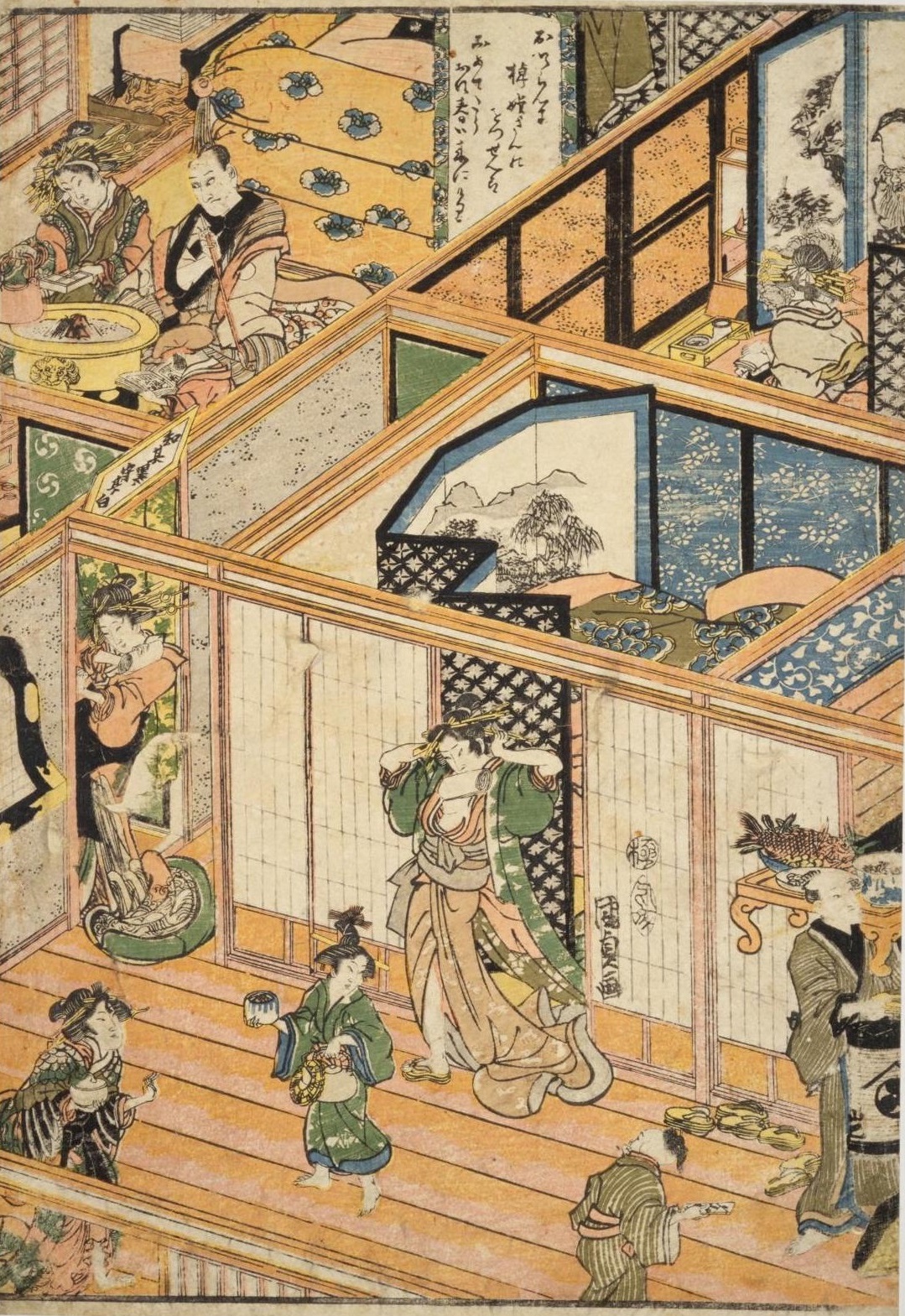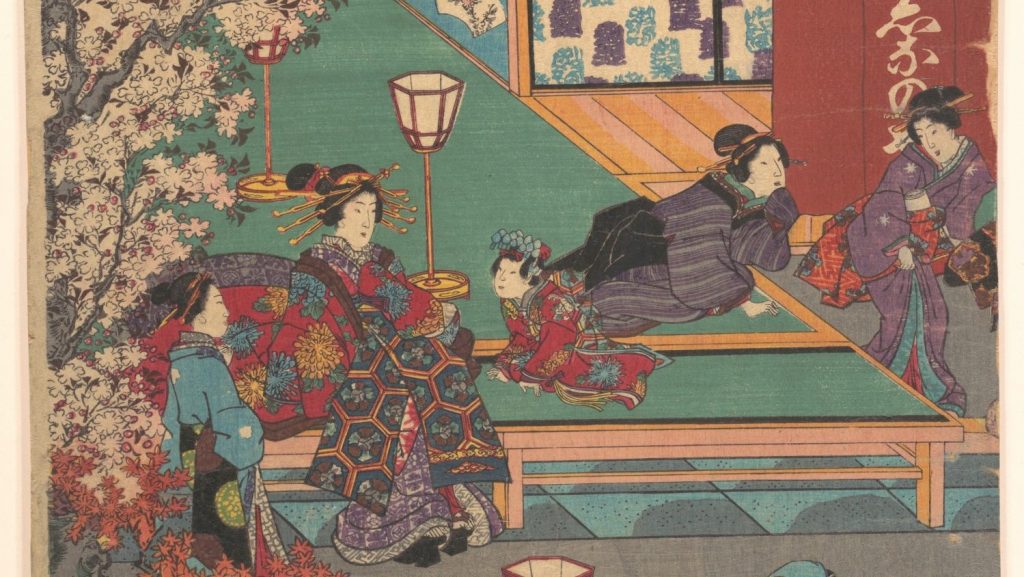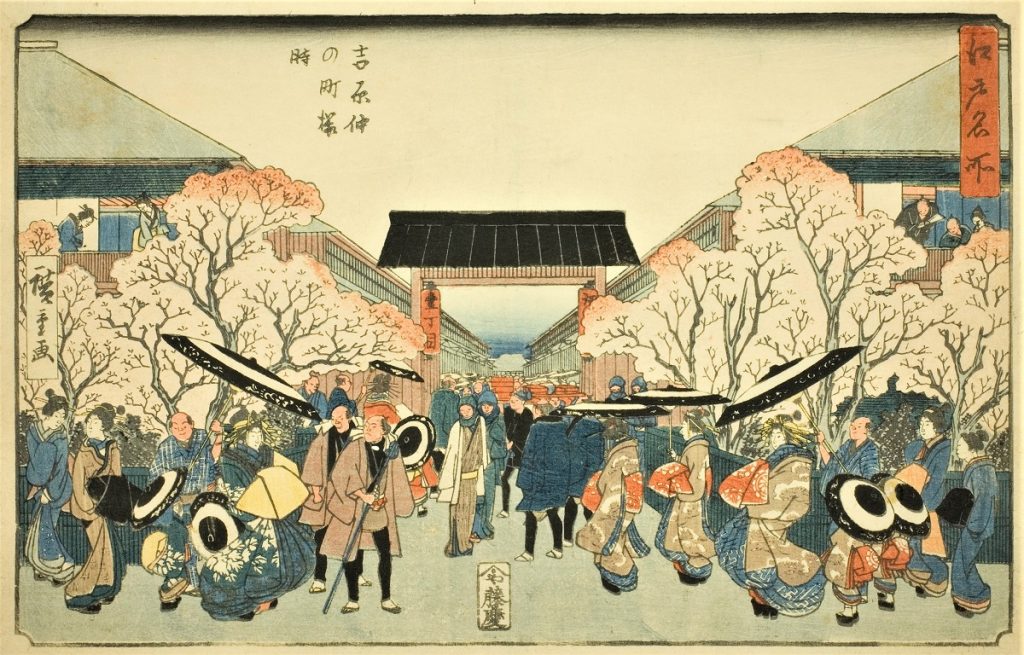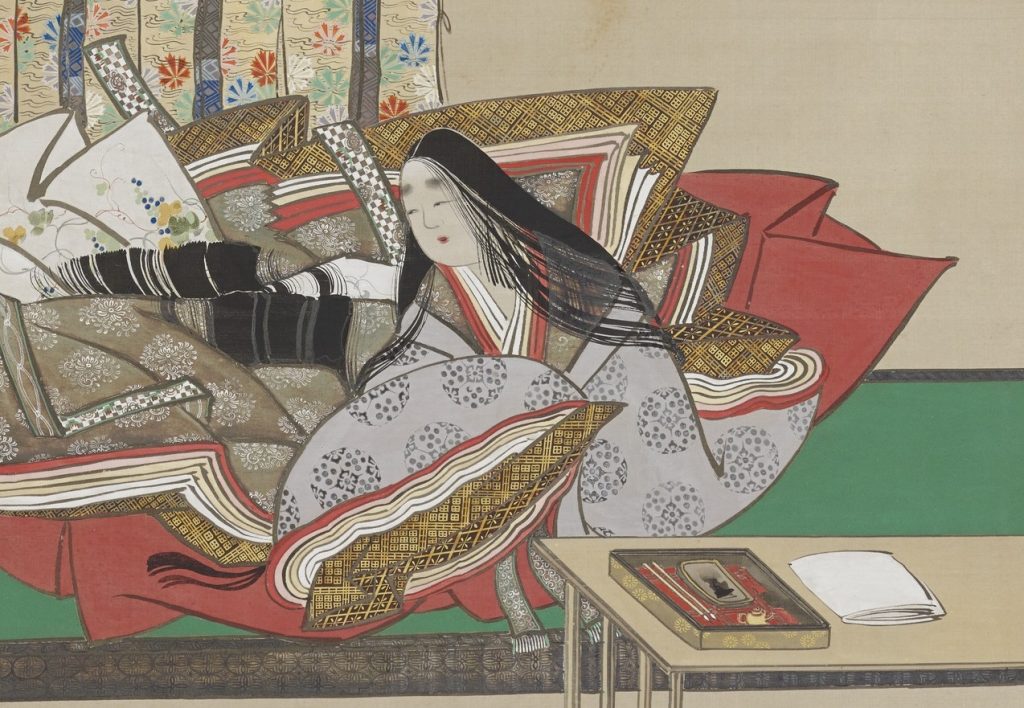Ukiyo-e was very popular among the people of the Edo period. The Yoshiwara yukaku of Edo were the subject of many ukiyo-e painters. This may have been because the high class yujos were admired for their intelligence and beauty, and influenced the fashion of the Edo period.
What is the name of this paper?
In ukiyoe paintings of yujos in Yoshiwara, they are often seen holding a piece of paper in their mouths. Now, what was this paper called?

And the answer is….
Misugami (御簾紙).
The luxurious paper was brought by the Yujo, when taking their customer to the bedroom and it is said that to have got its name from its transparency, like a misu (御簾 : bamboo screen used in palaces and temples). It seems to have been used for cleaning up, but paper was a precious commodity at the time. This was another example of the ingenuity used to create the world of dreams for their customers.
The origin of the word ‘hiyakashi (冷やかし:meaning to tease)’ is also related to yujos and paper. The paper making process involves some dead time where the paper materials need to be cooled in water. It was during this freed up time, that the paper makers working near the Yukaku would go there to ‘window shop’ the Yujo and tease them. When the Yujo unknowingly approached these men, the Yarite baba (middle-aged women who acted as their supervisor) would tell them not to waste their energy on them as they were just here to ‘hiyakasu’ (meaning to cool down). It is said that this is how the term ‘hiyakashi’ came to be used to refer to people who simply came to look without buying.
Reference book: ‘Yoshiwara yukaku no subete (吉原遊郭のすべて)’ Futabasha (双葉社) ‘Nihon Daihyakka zenshu (日本大百科全集)’ Shogakukan
Eye-catcher: Utagawa Kunisada from National Diet Library Digital
This article is translated from https://intojapanwaraku.com/rock/culture-rock/231882/
Kawaratani Tokiko
Grew up with performing arts from an early age. She mistakenly aspired to become a stage actress for a time, but failed. Participated in childcare magazines, magazines for foreigners and magazines for the preservation of old houses. She loves Noh, Kyogen (狂言), Bunraku (文楽), Kabuki (歌舞伎) and Kamigata Rakugo (上方落語). Loves Kataoka Nizaemon (片岡仁左衛門) XV. She has always been told that she is detached from reality, and has given up on the idea that this will ever change.


























